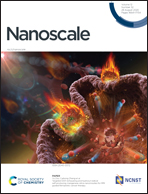Tunable anisotropic plasmon response of monolayer GeSe nanoribbon arrays†
Abstract
Recently, emerging two-dimensional (2D) germanium selenide (GeSe) has drawn lots of attention due to its in-plane anisotropic properties and great potential for optoelectronic applications such as in solar cells. However, methods are still sought to enhance its interaction with light to enable practical applications. Herein, we numerically investigate the localized plasmon response of monolayer GeSe nanoribbon arrays systematically, and the results show that localized surface plasmon polaritons in the far-infrared range with anisotropic behavior can be efficiently excited to enhance the light–matter interaction. We further show that the plasmon response of monolayer GeSe nanoribbons could be tuned effectively through the nanoribbon width, local refractive index, substrate thickness and carrier concentration, pointing out the ways for controlling the localized plasmon response. In the case of monolayer GeSe nanoribbons on a substrate of finite thickness, a Fabry–Pérot-like (FP-like) quantitative model has been proposed to explain the overall spectral response originating from overlapped FP and plasmon modes, and it matches well with the simulation results. All in all, we investigate the plasmon response of the novel 2D GeSe nanoribbons thoroughly for the first time, bringing opportunities for potential applications of novel polarization-dependent optoelectronic devices.



 Please wait while we load your content...
Please wait while we load your content...